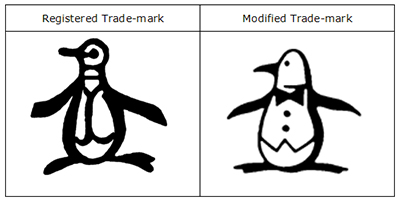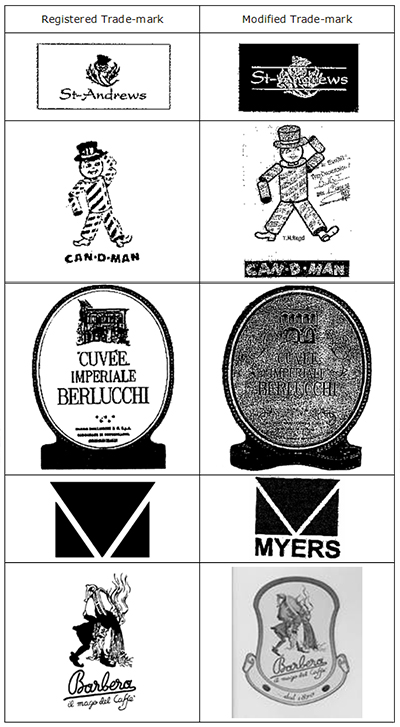As companies evolve over time, they often modify the general style and particular elements of their corporate logos. If a business retires an old logo and adopts a new one, that company would typically register the updated logo as a new trademark. However, the decision to update and not replace an existing logo presents a more difficult consideration: to what extent can an existing trademark be altered before it is no longer protected under the original registration? Naturally, this question is an important, common issue for many businesses and has been the frequent topic of litigation.
Penguin design mark. The leading decision in this area of law is the 1992 case involving Promafil Canada Ltée. and Munsingwear Inc. where the Federal Court of Appeal was asked to determine whether use of a modified design mark would still constitute use of the mark as originally registered. The design mark at issue depicted a penguin and was used by a clothing manufacturer in association with its products.

In reaching its decision, the Court remarked that the law of trademarks does not require maintaining the absolute identity of a mark to avoid abandonment; it simply requires the identity of the mark to remain recognizable in order to prevent confusion among unaware consumers.
Accordingly, the factors to be considered when assessing whether an altered or modified trademark is sufficiently similar to its original registration include:
- the maintenance of identity of the mark by the trademark owner;
- the recognition of the mark when the new variant replaces the old mark; and
- the preservation of dominant features in the new variant.
The two penguin designs in Promafil were held to differ only in certain minor details and thus created the same dominant impression, namely that of “a spread-eagled, formally dressed penguin, with head, beak and limbs turned similarly.” Consequently, the new variant was held to constitute use of the mark under the original registration and thus it was decided that the mark had not been abandoned.
MAGS design mark. The Trademark Opposition Board has similarly dealt with numerous cases of this nature. In a 2007 decision, the Board held that the differences between the registered trademark and the mark as used, as shown below, were more than slight visual differences.

Specifically, the Board remarked that the “man design” was a dominant feature of the mark and was not preserved in its entirety in the new design, which lacked the “zigzag” lines missing under the feet. Furthermore, the “M” of the man previously served as the first letter of the word “MAGS” that appears in the registered mark. This feature is neither present nor dominant in the updated design. Also, the word “MAG” now appears instead of “MAGS,” and the placement of the wording forming the mark has been moved to the top of the design.
The Board held that the mark as used consisted of two separate elements – a design and a mark – whereas the registered trademark provided a more integrated design. The modified trademark was consequently found not to be covered or protected by the original registration.
Examples of acceptable design mark variants. Admittedly, it is often difficult to predict which variations of a mark will be considered acceptable by the courts. The following chart provides a brief summary of marks that have been deemed sufficiently similar.

Conclusion. A trademark registration is an intellectual property right conferred for the purpose of allowing an owner to acquire distinctiveness of a mark in association with the registered goods and services and serve as an indication of source to prevent confusion among consumers. Accordingly, when a mark is altered there is a risk that the trademark will no longer be distinctive of its owner and may confuse unaware purchasers. For this reason, the courts will render invalid any registration that has been altered to the extent that the dominant features of the design mark are no longer the same. If only for the sake of certainty regarding one’s legal rights, a prudent trademark owner should always apply for a new trademark registration whenever there is any change in a company logo or trademark.
Erin T. Creber, Ottawa
The preceding is intended as a timely update on Canadian intellectual property and technology law. The content is informational only and does not constitute legal or professional advice. To obtain such advice, please communicate with our offices directly.
